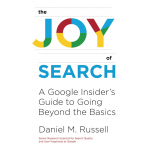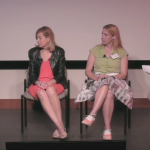1. The phrase “wheel inside the wheel” is used fairly often in popular culture and in a number of songs. Can you figure out where the phrase originated from? (Where was it first used? And what is the “wheel inside the wheel”?)
If you look at the first hit (the Mary Gauthier website with the backstory of the song “Wheel Inside the Wheel”), you’ll see she talks about how she was influenced by Johnny Cash’s song that mentions “Ezekiel the wheel in the wheel in the air…” Johnny Cash’s song is great, but that reference is to the Old Testament (from book of Ezekiel). A quick search for
[ “wheel inside the wheel” Ezekiel ]
tells us that it’s from the book of Ezekiel, Chapter 1, verses 15 – 21. The King James English text is ‘The appearance of the wheels and their work was like unto the colour of a beryl: and they four had one likeness: and their appearance and their work was as it were a wheel in the middle of a wheel.” That’s close enough to be within the bounds of matching of lyrics. (Especially when the author tells us that was the inspiration…)
So, when was Ezekiel written? Several sources point out that Ezekiel writes that it was written while he was exiled in Babylon, during the 22 years 593-571 BCE. Call it 2500 years or so before now.
That’s probably as far back as we can trace it…
2. In one such song about “Wheel Inside the Wheel”, Jimmy Buffett has a line describing “Spyboy meets Spyboy, and Big Chief meets Big Chief uptown..” Huh? What’s a spyboy? And why would Big Chief meet Big Chief uptown? What’s this all about?
As several people pointed out, the “Wheel Inside the Wheel” song is really by Mary Gauthier (but has probably reached more people via the Buffett recording). But the question remains: “Spyboy?” “Big Chief”? What are they?
My query was initially just [ Spyboy ], but that turns out to have multiple meanings, none of which are useful for figuring this out. But having learned it’s somehow connected with Mardi Gras and New Orlean, my next query was to add an additional clarifying search term, in this case “New Orleans”…
[ spy boy New Orleans ]
which led to a LOT of web pages (Wikipedia, MardiGrasNewOrleans.com, etc.) all of which tell us that a Mardi Gras Indian parade has a “spy boy” up in front, walking along the parade route and looking out for trouble (usually competing tribes). The spy boy who signals the “flag boy” who then signals the “Big Chief” (the de facto leader of the parade) what’s going on. The tribes might choose to meet, in which case there’s usually a symbolic fight, with the Big Chiefs taunting each other.
And yes, you can find YouTube videos of these events–here are two Big Chiefs meeting:
And, as JM discovered, there’s another song “Iko, Iko” which talks about Flag Boys and rival gangs meeting. There are several excellent videos of this song, but here’s a very basic one (with lyrics).
3. In the 1981 South African hit, Impi, some of the lyrics say: “All along the river Chelmsford’s army lay asleep; Come to crush the children of Mageba; Come to exact the realm’s price for peace…” Who’s Chelmsford? Who’s Mageba? And what’s the backstory here?
The first search [ Impi Chelmsford ] (I just used two relatively rare words that were in the Challenge) and found that there was some ambiguity (two different battles showed up in the results), so I added in Mageba to the search [ Impi Chelmsford Mageba ] and found that the Johnny Clegg song “Impi” is about the Battle of Isandlwana on the 22 January 1879.
 |
| Lord Chelmsford |
 |
| King Cetshwayo (c 1875) |
 |
| The Battle of Isandlwana (1879). Charles Edwin Fripp |
As I mentioned, I find these backstories really fascinating. If you don’t spend a couple of minutes looking up these things, it feels like you’re missing part of the story.




